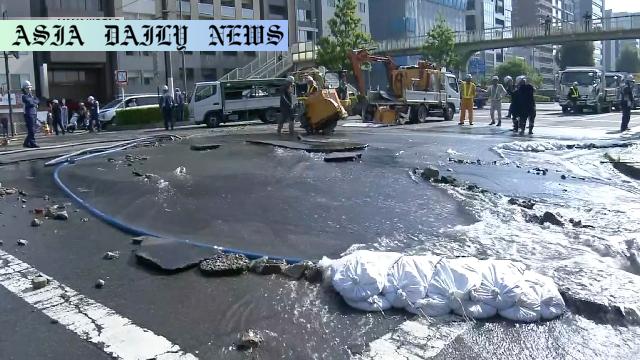Water pipe inspection: Kyoto City to revamp inspection methods after a major intersection flood caused by an outdated water pipe.
Kyoto City plans to rethink water pipe inspection methods after a significant leak disrupted traffic.
A pipe installed in 1959 broke, causing flooding, murky water, and service disruptions for residents.
City officials aim to refine timing and techniques for inspections to prevent future incidents.

Kyoto’s Pipe Leak Sparks Urgent Policy Reassessment
On Wednesday, Kyoto City was thrust into a crisis when a rupture in an aged 30-centimeter-wide water pipe caused flooding at a bustling intersection on National Route One, approximately a kilometer from JR Kyoto Station. The pipe, installed in 1959, unleashed torrents of water, disrupting traffic and affecting essential services in the area. Although the city authorities responded by promptly replacing the pipe and implementing traffic suspensions, the incident served as a stark reminder of infrastructural vulnerabilities in densely populated urban environments.
The broken pipe led to widespread repercussions, including murky water supplies potentially affecting up to 6,500 buildings in Kyoto. This unforeseen event compelled the city’s Water Supply and Sewage Bureau to roll out emergency measures such as dispatching trucks to provide clean water to impacted residents. The aftermath of the burst underscored the urgency of modernizing infrastructure to adapt to current demands.
The Flaws in Existing Inspection Methods
Kyoto City Water Supply and Sewage Bureau officials admitted that the affected pipe had been inspected earlier this year in January and found no issues. The pipe was slated for replacement in November, adhering to a 60-year usage guideline. However, the unforeseen failure indicates potential flaws in the current inspection methodologies. Annual check-ups, while regular, may lack the depth or technology to catch underlying vulnerabilities. These shortcomings prompted the officials to announce a reconsideration of the timing and methods used for pipe inspections in order to prevent similar mishaps in the future.
It’s evident that maintaining aging infrastructure is becoming increasingly challenging as cities grow. Pipes and other utilities initially designed for smaller populations and lower usage are now under immense strain. This highlights the importance of integrating advanced diagnostic technologies and implementing predictive maintenance strategies to ensure urban resilience.
The Path Forward: A Call to Action
In response to the incident, Kyoto’s administration is likely to adopt a more proactive stance, including rescheduling inspections and leveraging modern technologies for detecting potential vulnerabilities in water pipelines. Digitized systems such as smart sensors, AI-powered diagnostic tools, and predictive analytics could revolutionize the way infrastructural health is monitored and maintained.
The city is also expected to revise its infrastructure management timelines to account for the unexpected stresses on older systems. By prioritizing testing and maintenance of high-risk areas, the administration can significantly reduce the probability of disruptions and ensure more consistent service delivery. Furthermore, a robust public communication strategy addressing citizen concerns about water quality and service reliability could foster greater public trust in the city’s efforts to manage future incidents.



Commentary
The Urgency of Modernizing Infrastructure
The recent water pipe burst in Kyoto serves as a cautionary tale for urban planners globally. Incidents like this not only disrupt daily life but also underscore the pressing need to prioritize infrastructural upgrades in fast-evolving cities. While Kyoto has commendably scheduled the replacement of aged pipes, the incident highlights a gap between planning and execution. This emphasizes the necessity for adaptive, data-informed strategies to address aging infrastructure.
Leveraging Technology for Better Outcomes
One of the glaring takeaways from this event is the importance of integrating modern technologies into traditional systems. Advanced diagnostic tools such as smart sensors and AI-based analytics could revolutionize how cities inspect and maintain their infrastructure. Predictive analysis offers a proactive approach compared to the reactive stance of annual inspections, which evidently fell short in this case. Investing in such technology would greatly benefit Kyoto and other cities tackling similar challenges globally.
Collaboration and Communication Are Key
Effective collaboration between government departments, technological innovators, and the public is vital to achieving sustainable solutions. Moreover, maintaining transparent communication with citizens during crises ensures co-operation and trust. Measures like supplying clean water trucks and promptly addressing public concerns about quality control reflect Kyoto’s responsible crisis management.
Overall, this incident serves as an opportunity for Kyoto and other cities around the world to revisit their approaches towards infrastructure management. By adopting cutting-edge technologies and revising timelines informed by real-world data, we can ensure a safer and more reliable urban living experience for all citizens.